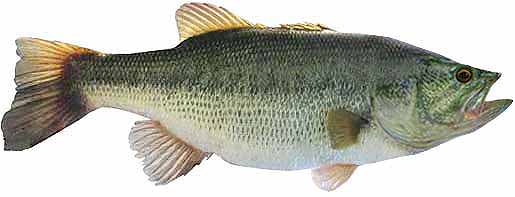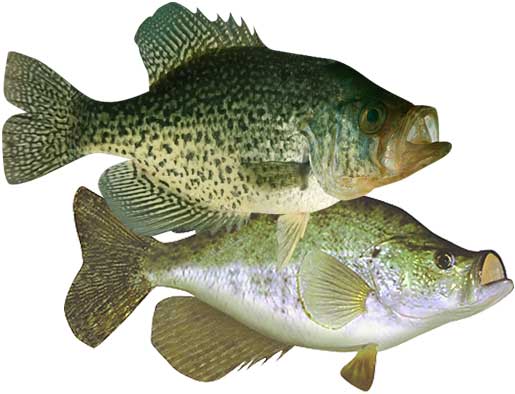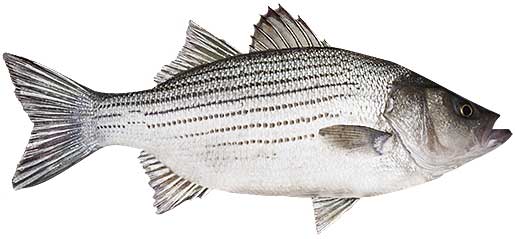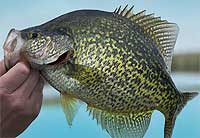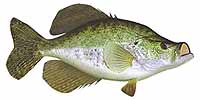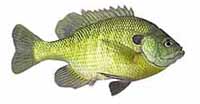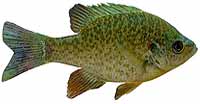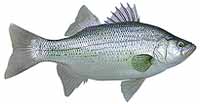Fishing Report For Hyco Lake, NC
AKA: Hyco Reservoir, Lake Hyco
By Rick Seaman
Last updated on .
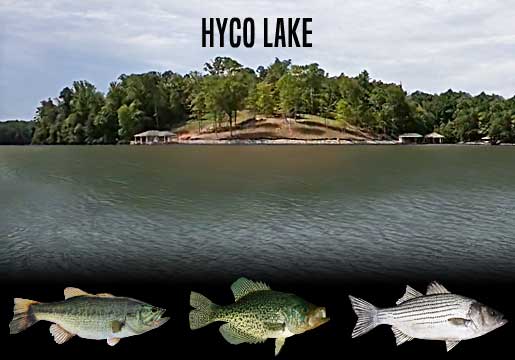
Fishing Reports
Popular Fish Species Hyco Lake, NC
Largemouth Bass
Current Report: Very Good
Thanks to size limits set by the N.C. Wildlife Resources Commission, the bass fishery at Hyco Lake is improving year after year. The average size is increasing and the numbers are improving as well.
FALL. Now that Fall has arrived, bass here have moved shallow, following schools of baitfish into coves and shallow bays around 4 to 20 feet of water. Currently topwater, jerkbaits, crankbaits, and slow-rolled spinnerbaits are catching most of the bass. Later in Fall, as deeper water cools, bait and bass move out to ledges, channel edges, points and humps where flutter spoons, jigs and drop shots are often good choices in 10 to 20 feet of water.
WINTER. Winter will isolate largemouth around slightly deeper structure, flats, points and creek channels. They can be found from 15 to 35 feet deep. Here they hold, feeding less frequently, awaiting warmer water to return in Spring. Slow presentations are key to getting bites. On warmer days, especially during late afternoons, bass may move into 6 to 12 feet of water to feed.
SPRING. Once water temperatures rise into the low 60's, largemouth will move from deep wintering holes, to shallower water nearby spawning areas. The clear water makes ideal conditions for topwater fishing. Tournament anglers claim stick worms will entice bites when the bass get finicky, and often catch some of the top weights. Topwater baits, vibrating jigs, jerkbaits and spinnerbaits typically get bites just away from the shoreline. At this time they are feeding aggressively in about 2 to 12 feet of water, and preparing for the spawn. Once water warms into the mid to high 60's, they will move into 2 to 4 feet of water, and create nests, then lay their eggs. Immediately afterwards, females move to deeper water and males remain to guard the eggs, and then the fry. After a couple weeks, the males also move to slightly deeper water. Deep-diving crankbaits, vibrating jigs, plastic worms and swimbaits are catching bass during this period.
SUMMER. Water temperatures will warm considerably in Summer. Bass will feed shallow, early and late in the day, where they will be caught in 8 to 20 feet of water, on square-bill crankbaits and spinnerbaits. Wacky-rigged stick worms always catch finicky bass when the bite is slow. Largemouth bass here feed on shad, herring, small sunfish and crawfish. During the hotter parts of the day, they are being caught on points, channel edges, and ledges 12 to 30 feet deep. Some of the best reports seem to be from anglers fishing around deep channel edges and main basin humps.
Black & White Crappie
Current Report: Good To Very Good
FALL. Baitfish, which are moving into shallow flats, coves and bays, are drawing crappie into these areas. Early, they were feeding heavily in preparation for the cold Winter, in 6 to 18 feet of water on wind-blown points and flats on the north and west shores. Minnows, hair jigs, and crappie jigs, are good options during this feeding marathon. Late fall starts the migration deeper, toward winter holding areas, for both crappie and baitfish. Small flutter spoons, fished in 12 to 20 feet of water, are a good option during this transition. Good results are coming around points, creek channels, and brush piles.
WINTER. Once the shallows start cooling rapidly, crappie will migrate to deeper holding areas, mostly off shore. At this time they are typically caught using a very slow presentation, in 18 to 30 feet of water. Most are caught around deep brush piles, creek channel bends, submerged timber, and main-lake structure. If they are suspending in open water, they often relate to some cover, or structure change, directly below them. During warming trends, especially warm afternoons, they are drawn into 12 to 20 feet of water to feed.
SPRING. In early Spring, crappie begin staging in 3 to 12 feet of water, just outside spawning bays and shallow flats. There are a half dozen major arms of the lake, each with multiple pockets and smaller creek off the main channel. Each of these pockets can hold crappie if there is cover. After the spawn, crappie move outside the mouth of these creeks to the nearest cover. Spring is prime time to be on the water, as both black crappie and white crappie have moved shallow to spawn. At that time, they are typically caught in 4 to 8 feet of water. Vegetation, docks, brush and wood are where most anglers catch crappie using small crappie jigs or live minnows. After the spawn, crappie typically move outside the spawning area and hold on cover close by, in 12 to 20 feet of water. Once they move deep, anglers report success using fish finders and forward facing sonar to locate schools of crappie, which tend to stack vertically around cover. Light tackle, with 4 lb to 8 lb line, is a popular choice.
SUMMER. Water temperatures get quite warm, and crappie fishing is usually pretty good. They feed in 8 to 15 feet of water early and late in the day, until the hot Summer sun causes them to retreat to depths of 12 to 28 feet. Also, a few have embedded in the shade of slightly shallower vegetation. This is a good time to focus around brush piles, standing timber, deep lay downs, bridge pilings and deeper docks. Anglers are also locating schools of crappie hanging over deep structure and around creek channel edges, using fish-finder electronics.
Hybrid Striped Bass
Current Report: Good
Since 2019, hybrid striped bass, or bodie bass, have been stocked into Hyco Lake. These fish are growing at a fast rate thanks to fertile water and plenty of forage baitfish.
FALL. In Fall, hybrid stripers return to shallow water, the upper end of the lake, and into inflowing water if available. Early in the day wipers chase bait to the surface and feed aggressively, making this an excellent time for topwater action. Mid day they move into 8 to 20 feet of water. Look for structure nearby deeper sections in channels, and fish them thoroughly. Most any lure that resembles shad will catch wipers at this time of year.
WINTER. In Winter, hybrid stripers again hang out in deeper water and feed close to the bottom, often 30 feet deep or deeper. Warm afternoons occasionally draw stripers shallower, so look for them around the 15 to 20-foot range as they feed on roaming schools of threadfin shad and gizzard shad. In Winter it is important to locate schools of bait, then look for wipers schooling below the bait. Fish finders, and forward facing sonar, are a big help in locating these roaming schools. Nice fish are being caught while trolling or drift fishing. Spoons, swimbaits, blade baits, crankbaits, live bait and cut bait are typically effective this time of year. Due to slower metabolism, anglers are triggering more strikes by making slower presentations.
SPRING. When water temperatures rise into the mid 60's now, it's the ideal time for hybrid stripers to spawn. There are plenty of hybrids averaging 2 to 3 pounds, with an occasional 5-pound plus fish being caught. In Spring, work wind-blown points, creeks, and the upper end of the lake if there is inflowing water. If they spawn, they will lay eggs in flowing water. Look for deeper holes in the river channels, around 8 to 20 feet, as they are a good holding place for hybrid stripers after the spawn.
SUMMER. In Summer, these wipers typically hang out in 12 to 28 feet of water, staying close to schools of bait. Swimbaits, jerkbaits, crankbaits, spoons all imitate baitfish and catch these schooling hybrids. Trolling is a preferred method for covering lots of water. Live bait and cut bait are also effective here for hybrid stripers. Sometimes during the heat of the day they move close to the bottom, 25 feet deep or deeper. Morning often draws hybrid stripers to much shallower water, so look for them around the 10 to 15-foot range as they feed on shallow, roaming schools of threadfin shad and gizzard shad. Being successful at fishing for stripers in Summer is a matter of locating schools of bait, and the wolf packs of wipers are likely to be nearby. Fish finders, and sonar electronics, are a big help in locating these roaming schools. Nice wipers are being caught by casting, trolling or drift fishing.
Fishing Video
Fish species to fish for...
Guide to fishing for largemouth bass, channel catfish, flathead catfish, black crappie, white crappie, bluegill, redear sunfish, hybrid striped bass and white bass at Hyco Lake in North Carolina.
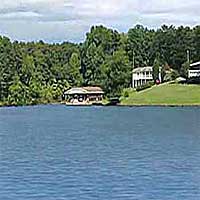 Hyco Lake is a 3,750-acre lake with 120 miles of shoreline, is primarily a bass and crappie fishery. Year-round warm water, heated by the generating station, lengthens the growing season, as well as appeals to anglers for winter-time fishing. There are good numbers of bass over 5 pounds and an occasional lunker over 8 pounds.
Hyco Lake is a 3,750-acre lake with 120 miles of shoreline, is primarily a bass and crappie fishery. Year-round warm water, heated by the generating station, lengthens the growing season, as well as appeals to anglers for winter-time fishing. There are good numbers of bass over 5 pounds and an occasional lunker over 8 pounds.
Primary fish species to catch
Click images for fishing tips and details about each species.
Today's Weather & Forecast
Fishing Boat Rentals
Click here for fishing boat rentals.
Marinas
Click here for marinas.
Public Boat Launch Ramps & Landings
Click here for boat ramps.
Fishing License
Click here for a North Carolina Fishing License.
Hyco Lake, NC Map - Fishing & Access
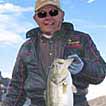 Rick Seaman is a fishing enthusiast with over five decades of fishing experience, a retired tournament fisherman, author of numerous published articles on fishing, and co-author of the book "Bass Fishing - It's not WHAT you throw, It's WHERE you throw it".
Rick Seaman is a fishing enthusiast with over five decades of fishing experience, a retired tournament fisherman, author of numerous published articles on fishing, and co-author of the book "Bass Fishing - It's not WHAT you throw, It's WHERE you throw it".
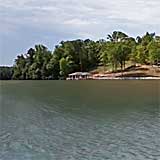 Contact Information
Contact Information
Hyco Lake Marina & General Store
9500 Semora Rd
Leasburg, NC 27291
336 599-2211
Fishing lakes in each state
102825
Hyco Lake, North Carolina Report
NORTH CAROLINA


Quality bass fishing in north-central NC.


